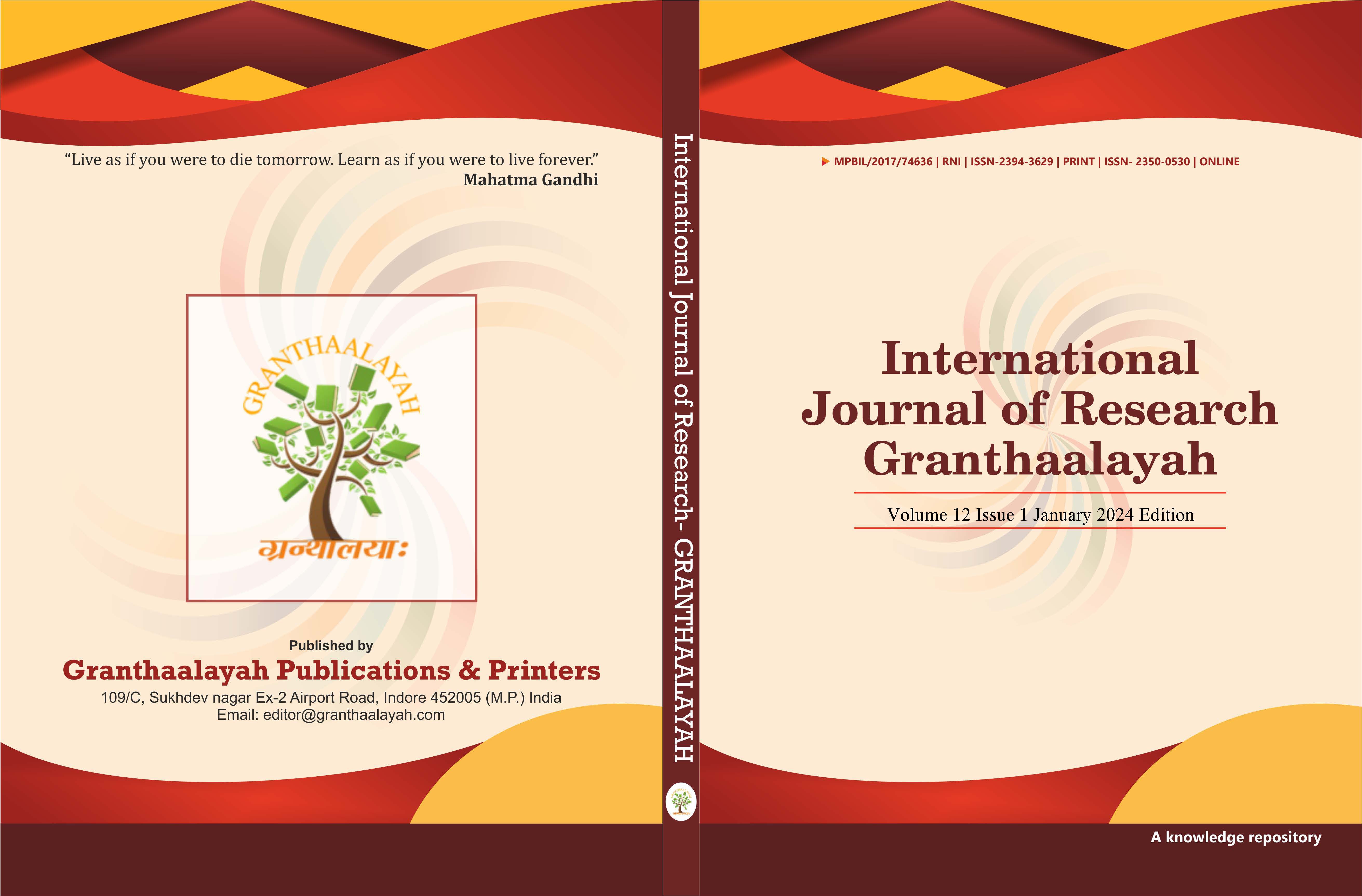SMARTEXPENSE: A CNN-ENHANCED PERSONAL FINANCE TRACKER WITH ANOMALY DETECTION
DOI:
https://doi.org/10.29121/granthaalayah.v12.i1.2024.6112Keywords:
Cnn, Personal, Finance, Anomaly, Detection, Tracker, SystemAbstract [English]
This project presents an intelligent Expense Tracker system enhanced with anomaly detection capabilities using Convolutional Neural Networks (CNNs). Designed to assist users in effectively managing their personal finances, the system tracks income, expenses, and available balance through an interactive and user-friendly interface. The core interface features include real-time budget summaries, categorized transaction input forms, a transaction history display, and dynamic visual analytics using Chart.js.
Beyond basic tracking functionality, the system integrates a CNN-based anomaly detection module trained to identify irregular or suspicious financial activity based on historical spending patterns. By analyzing temporal and categorical features of transaction data, the CNN model detects anomalies such as unusual spending spikes, duplicate entries, or category mismatches. This feature significantly enhances financial security and promotes better budgeting behavior.
The inclusion of CNNs allows for high-accuracy pattern recognition, offering users intelligent alerts and insights into potential financial inconsistencies. With its seamless blend of financial management tools and AI-driven anomaly detection, the proposed Expense Tracker provides a comprehensive, secure, and adaptive solution for modern personal finance management.
Downloads
References
Arbelaitz, O., Gurrutxaga, I., Muguerza, J., Pérez, J. M., & Perona, I. (2013). An extensive comparative study of cluster validity indices. Pattern Recognition, 46(1), 243–256. DOI: https://doi.org/10.1016/j.patcog.2012.07.021
Chalapathy, R., & Chawla, S. (2019). Deep Learning for Anomaly Detection: A Survey. arXiv preprint arXiv:1901.03407.
Munir, M., Siddiqui, S. A., Dengel, A., & Ahmed, S. (2019). DeepAnT: A Deep Learning Approach for Unsupervised Anomaly Detection in Time Series. IEEE Access, 7, 1991–2005. DOI: https://doi.org/10.1109/ACCESS.2018.2886457
Chang, Y. L., Sariyanidi, E., & Patras, I. (2019). Video Anomaly Detection using Clustering of Temporal Features. International Conference on Image Processing (ICIP).
Halkidi, M., Batistakis, Y., & Vazirgiannis, M. (2001). On Clustering Validation Techniques. Journal of Intelligent Information Systems, 17(2-3), 107–145. DOI: https://doi.org/10.1023/A:1012801612483
Saleem, M., Rana, O., & Farooq, M. (2021). Explainable AI: Interpretability Techniques for Deep Learning. Artificial Intelligence Review, 54(2), 1399–1423.
Omar, A. I., & Basri, S. (2020). Machine Learning Techniques for Anomaly Detection: An Overview. IEEE Access, 8, 133964–133986.
Lundberg, S. M., & Lee, S. I. (2017). A Unified Approach to Interpreting Model Predictions. Advances in Neural Information Processing Systems (NeurIPS), 4765–4774.
Goodfellow, I., Bengio, Y., & Courville, A. (2016). Deep Learning. MIT Press.
Kingma, D. P., & Welling, M. (2013). Auto-Encoding Variational Bayes. arXiv preprint arXiv:1312.6114.
Hochreiter, S., & Schmidhuber, J. (1997). Long Short-Term Memory. Neural Computation, 9(8), 1735–1780. DOI: https://doi.org/10.1162/neco.1997.9.8.1735
Zhao, Y., Nasrullah, Z., & Li, Z. (2019). PyOD: A Python Toolbox for Scalable Outlier Detection. Journal of Machine Learning Research, 20(96), 1–7.
Wang, Z., Yan, W. Q., & O’Sullivan, M. (2019). A Review of Automatic Multivariate Time Series Forecasting. arXiv preprint arXiv:1905.10437.
Xu, H., Caramanis, C., & Mannor, S. (2010). Robustness and Regularization of Support Vector Machines. Journal of Machine Learning Research, 10(Jul), 1485–1510.
Ruff, L., et al. (2018). Deep One-Class Classification. International Conference on Machine Learning (ICML).
Ahmed, M., Mahmood, A. N., & Hu, J. (2016). A survey of network anomaly detection techniques. Journal of Network and Computer Applications, 60, 19–31. DOI: https://doi.org/10.1016/j.jnca.2015.11.016
Chandola, V., Banerjee, A., & Kumar, V. (2009). Anomaly Detection: A Survey. ACM Computing Surveys, 41(3), 1–58. DOI: https://doi.org/10.1145/1541880.1541882
Erfani, S. M., Rajasegarar, S., Karunasekera, S., & Leckie, C. (2016). High-dimensional and Large-scale Anomaly Detection Using a Linear One-class SVM with Deep Learning. Pattern Recognition, 58, 121–134. DOI: https://doi.org/10.1016/j.patcog.2016.03.028
Zhou, C., & Paffenroth, R. C. (2017). Anomaly Detection with Robust Deep Autoencoders. Proceedings of the 23rd ACM SIGKDD, 665–674. DOI: https://doi.org/10.1145/3097983.3098052
Ribeiro, M. T., Singh, S., & Guestrin, C. (2016). "Why Should I Trust You?": Explaining the Predictions of Any Classifier. ACM SIGKDD, 1135–1144. DOI: https://doi.org/10.1145/2939672.2939778
Pang, G., Shen, C., Cao, L., & Hengel, A. V. D. (2021). Deep Learning for Anomaly Detection: A Review. ACM Computing Surveys, 54(2), 1–38. DOI: https://doi.org/10.1145/3439950
Bergman, L., & Hoshen, Y. (2020). Classification-Based Anomaly Detection for General Data. International Conference on Learning Representations (ICLR).
Schlegl, T., Seeböck, P., Waldstein, S. M., Schmidt-Erfurth, U., & Langs, G. (2017). Unsupervised Anomaly Detection with Generative Adversarial Networks to Guide Marker Discovery. International Conference on Information Processing in Medical Imaging. DOI: https://doi.org/10.1007/978-3-319-59050-9_12
Zhang, H., et al. (2020). A Survey on Explainable Artificial Intelligence (XAI): Toward Medical XAI. IEEE Transactions on Neural Networks and Learning Systems.
Mothilal, R. K., Sharma, A., & Tan, C. (2020). Explaining Machine Learning Classifiers through Diverse Counterfactual Explanations. Proceedings of the 2020 Conference on Fairness, Accountability, and Transparency (FAT) DOI: https://doi.org/10.1145/3351095.3372850
Published
How to Cite
Issue
Section
License
Copyright (c) 2024 Gargi Chauhan, Yash Chaprana, Divyansh Singh, Dr. Vikesh Kumar

This work is licensed under a Creative Commons Attribution 4.0 International License.
With the licence CC-BY, authors retain the copyright, allowing anyone to download, reuse, re-print, modify, distribute, and/or copy their contribution. The work must be properly attributed to its author.
It is not necessary to ask for further permission from the author or journal board.
This journal provides immediate open access to its content on the principle that making research freely available to the public supports a greater global exchange of knowledge.






























